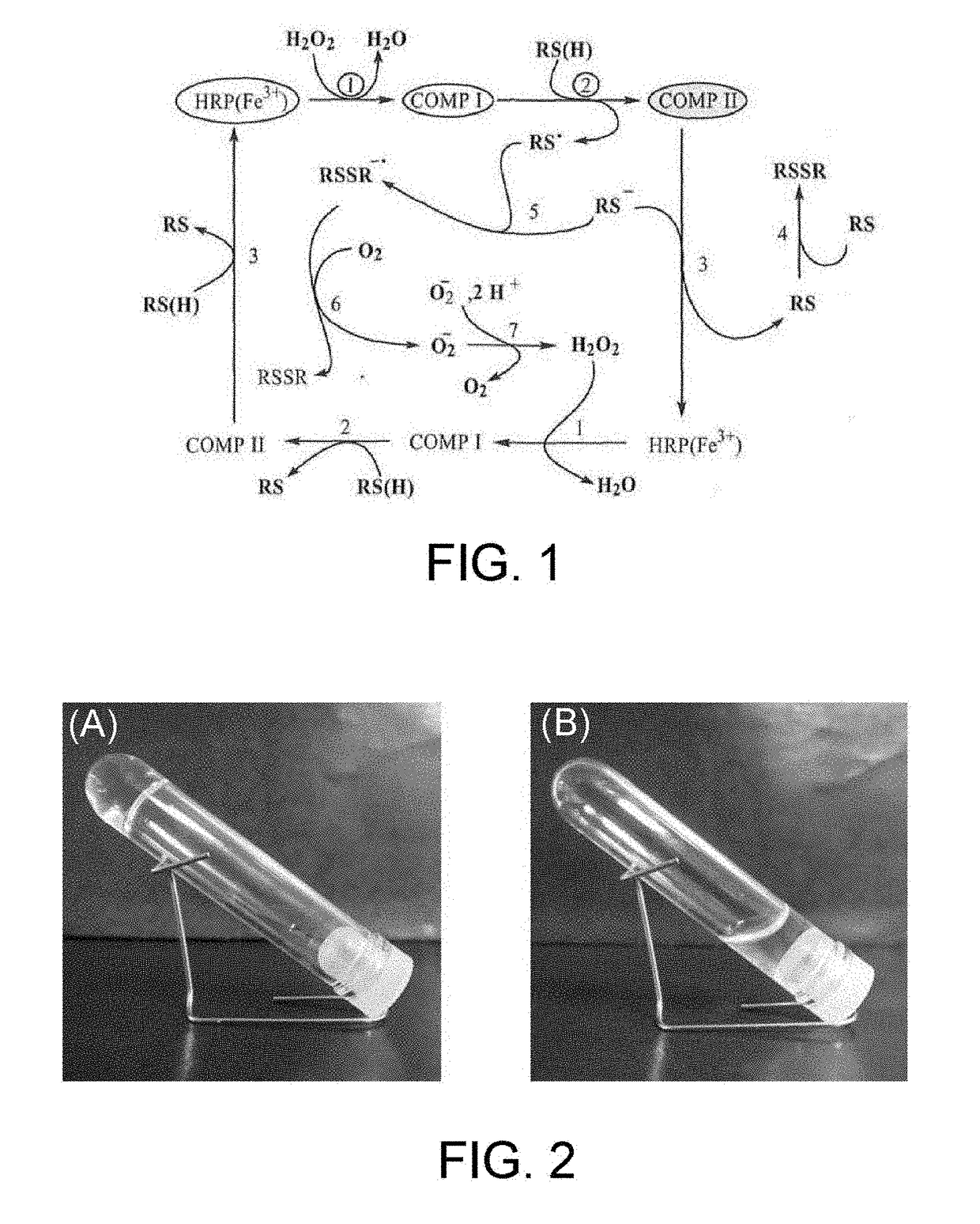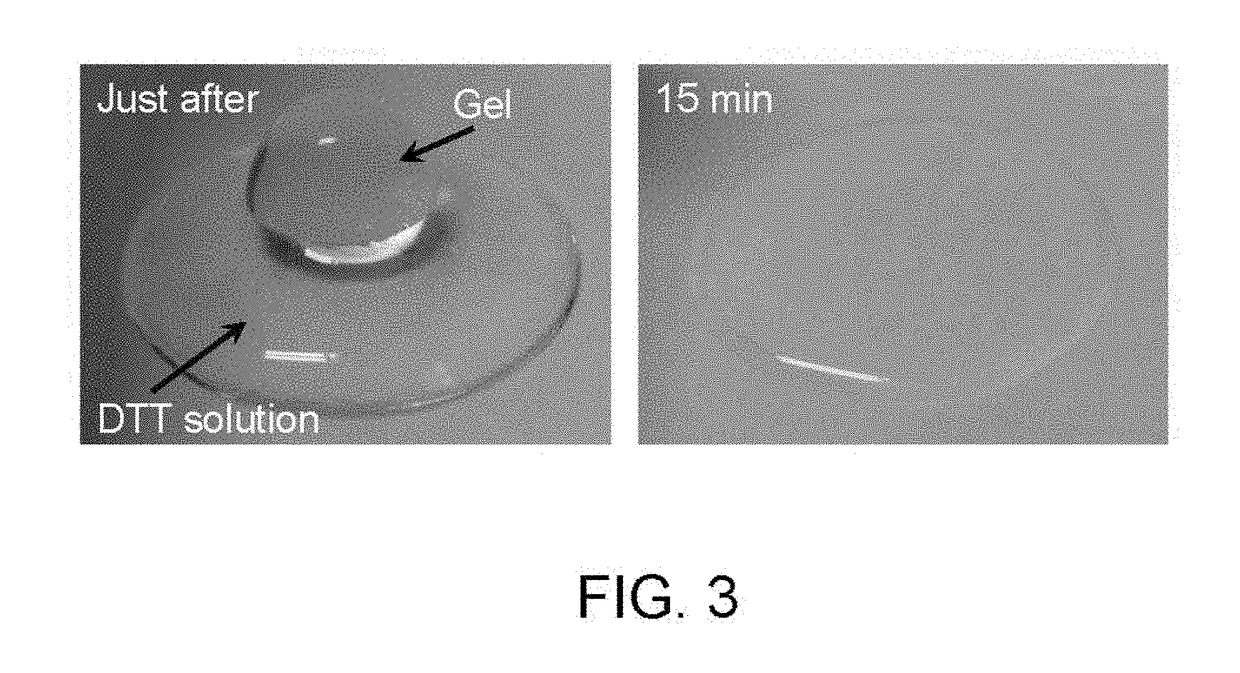Method for producing hydrogel, method for enveloping envelopment target, and method for releasing envelopment target
- Summary
- Abstract
- Description
- Claims
- Application Information
AI Technical Summary
Benefits of technology
Problems solved by technology
Method used
Image
Examples
example 1-1
[Production of Hydrogel by HRP-Catalyzed Reaction]
(Test Method)
[0078]A 4-arm PEG-SH (weight-average molecular weight: 20,000, SUNBRIGHT (a registered trademark) PTE-200SH, manufactured by NOF Corporation) as a polyethylene glycol having two or more thiol groups, and tyramine hydrochloride as a phenol compound were each dissolved in phosphate buffered saline (PBS, pH 7.4). The thus obtained 4-arm PEG-SH aqueous solution (150 μL, 10% (w / v)) and the phenol compound aqueous solution (75 μL, 20 mM) were mixed, an HRP aqueous solution (75 μL, 20 units / mL) was then added, and the resulting mixture was left to stand at 22° C. The final concentrations of the 4-arm PEG-SH, the phenol compound and the HRP were 5% (w / v), 5 mM and 5 units / mL respectively.
examples 1-2 to 1-7
[0083]With the exception of using phenol (Example 1-2), Gly-Tyr (Example 1-3), hydroquinone (Example 1-4), resorcinol (Example 1-5), catechol (Example 1-6) and serotonin (Example 1-7) respectively as the phenol compound instead of tyramine hydrochloride, tests were performed in the same manner as Example 1-1.
[0084]Gel formation was observed in a similar manner for these other phenol compounds (see FIG. 4).
example 2
[Effects of Catalase]
[0085]In this test, catalase which decomposes hydrogen peroxide into oxygen and water was added to the system, and the effect on the gelation of the polymer aqueous solution was investigated. It was predicted that if hydrogen peroxide generated within the system was participating in the gelation, then the addition of catalase should lengthen the gelation time. In this investigation, tyramine hydrochloride was used as the phenol compound.
(Test Method)
[0086]The 4-arm PEG-SH and tyramine hydrochloride were each dissolved in PBS (pH 7.4). The thus obtained 4-arm PEG-SH aqueous solution (100 μL, 15% (w / v)) and the tyramine aqueous solution (100 μL, 15 mM) were mixed, and an HRP aqueous solution (50 μL, 30 units / mL) was then added. Finally, a catalase aqueous solution (50 μL, 0.27 mg / mL) was added, and the resulting mixture was left to stand at 22° C. The final concentrations of the 4-arm PEG-SH, the tyramine hydrochloride, the HRP and the catalase were 5% (w / v), 5 mM...
PUM
 Login to View More
Login to View More Abstract
Description
Claims
Application Information
 Login to View More
Login to View More - R&D
- Intellectual Property
- Life Sciences
- Materials
- Tech Scout
- Unparalleled Data Quality
- Higher Quality Content
- 60% Fewer Hallucinations
Browse by: Latest US Patents, China's latest patents, Technical Efficacy Thesaurus, Application Domain, Technology Topic, Popular Technical Reports.
© 2025 PatSnap. All rights reserved.Legal|Privacy policy|Modern Slavery Act Transparency Statement|Sitemap|About US| Contact US: help@patsnap.com



